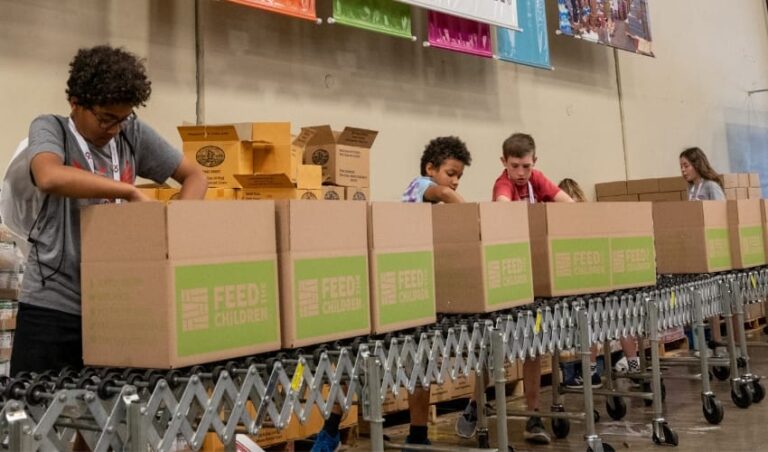
Food and Essentials Hubs
Making sure that kids get enough to eat is one of the most effective ways to support their education. Proper nutrition plays an important role in brain development. Also, the physical effects of feeling hungry in the classroom can detract from learning. That’s why Feed the Children created our Food and Essentials Hubs program.
Food and Essentials Hubs have been part of Feed the Children’s operations since 2019. However, the program has undergone some major updates in recent years. The start of the 2023 school year will come with an entirely new look for the program.
What is a Food and Essentials Hubs?
Food and Essentials Hubs provide food, essential household and personal care items, school supplies, and books to those who need them. All Feed the Children Food and Essentials Hubs are located within Title 1 schools. Feed the Children and its supporters will stock them with donations. Students at the participating schools and their families can shop at the resource rooms at no charge.
Where will the Food and Essentials Hubs be?
In the 2022 school year, Feed the Children worked with 260 schools in seven different districts. For the 2023 school year, Feed the Children has partnered with nine major school districts across the country. Phoenix, AZ; Paramount, CA; Orlando, FL; Atlanta, GA; Detroit, MI; Oklahoma City, OK; Memphis, TN; Dallas, TX; and Houston, TX.
Why put the Food and Essentials Hubs in schools?
Attaching the Food and Essentials Hubs directly to schools may help improve access to food for those in need. The location also ensures we’re reaching our target demographic of children and families.
How do the Food and Essentials Hubs work?
Each school district manages their own resource rooms. This allows the district to set up its rooms in ways that best fit the needs of every school. One Food and Essentials Hubs might need to be larger, or have a different inventory, than the others around it. The school districts will be able to respond to the individual needs of their schools.
Some schools set up their Food and Essentials Hubs to resemble a storefront. The rooms are open for specific hours. During these times, students and their parents can come pick up food and other items.
Other schools find that it works better to have community-wide distribution events on specific days. Some even do home deliveries to students and families.
How do Food and Essentials Hubs help families?
The Food and Essentials Hubs program will help give children access to enough food for a healthy, active lifestyle. Schools have always provided a support system for their families, so they are the perfect partner for this program.
By providing these Food and Essentials Hubs, Feed the Children hopes to increase the levels of food security among participating families. The resources provided will offset the costs of other expenses the family may have. If they are able to spend less on food, that leaves more money for bills, childcare, and emergencies.
Food and Essentials Hubs help students both inside the classroom and at home. We want to improve students’ readiness to learn, boost their mental well-being through increased confidence, reduce missed days and ultimately help improve a student’s overall education outlook for success in life!






